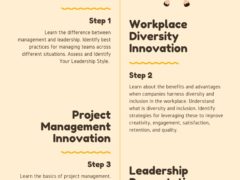As the saying goes, ‘the squeaky wheel gets the grease,’ which means the person or group with the loudest voice is often the one who is heard. This is not just a result of volume but also tone, tempo, language, and quality. This often involves the most profitable customer, angriest colleague, or anxious community stakeholder driving the planning, prioritization, and execution processes.
Personality also influences if, when, and why something is heard. This can involve someone who is gregarious and well connected, persuasive, or downright manipulative. It can also involve vectors that influence the market, customer behaviour, or how a business’ product/service is evaluated. Whatever its direction, business owners and strategists have long known that personality can influence the quality of a business’ outputs.
We have, as a nation, become our own thought police; but instead of calling the process by which we limit our expression of dissent and wonder ‘censorship,’ we call it ‘concern for commercial viability. – David Mamet
How a product/service is evaluated, how risk is managed, and how priorities are established is determined by both qualitative and quantitative values. It includes external and internal referents that are not always equal nor equally weighted. The resulting decision can often be as unique as the fingerprint of the individual making the decision.
Predicting these personalities can assist the business in developing a proactive value  proposition or solution. Unfortunately, the vectors are theoretically infinite despite being able to reduce these to an abbreviated list>
proposition or solution. Unfortunately, the vectors are theoretically infinite despite being able to reduce these to an abbreviated list>
The influence of personality is also experienced on business culture. It can influence what projects are accepted, what processes are reinforced, and what tools are made available to the team. It also influences what beliefs, attitudes, values, and norms will be accepted and which ones will be rejected. The impact these can have on business excellence and innovation projects are not minimal.
We have, as a nation, become our own thought police; but instead of calling the process by which we limit our expression of dissent and wonder ‘censorship,’ we call it ‘concern for commercial viability. – George Orwell
 The results can raise the business model & project team’s performance to a higher level – or – limit its aspirations. It is exactly for this reason that most industry disruptions have been supported by businesses that are able to harness the necessary competencies.
The results can raise the business model & project team’s performance to a higher level – or – limit its aspirations. It is exactly for this reason that most industry disruptions have been supported by businesses that are able to harness the necessary competencies.
Scenario 1
Imagine a scenario where a coworker is speaking with a new colleague about professional expectations. The new colleague is an enterprise level project manager who is responsible for managing the aligned work effort of executives, vice presidents, operations leaders, and subject matter experts. In addition to this challenge, the projects are across the country and in different time zones.

The new project manager establishes the expectation that all meetings will be attended, emails will be reviewed, conversations will be attended to with at least a modicum of thoughtful attention, and documents will be reviewed when needed. To the new project manager, this expectation seems perfectly ordinary, but the experienced colleague knows this is not part of the business culture. In fact, different colleagues are held accountable to different standards. Essentially, a class structure exists within the business environment where the ‘leaders’ are held to different standards than the rest of the team.
For those who are familiar with this common scenario, the results are often plain to see. The business often struggles with executing aligned planning efforts, responding adaptively to sudden changes and opportunities in the environment, and establishing excellence as an expectation. Despite these systemwide contradictions, the espoused expectation is for excellence to be achieved even though the leadership, resources, information, and models to reinforce its presence remains absent.
Scenario 2
In another scenario, the project manager is reporting project performance. Because the project is in the early initiation stages of the charter, schedule, and meeting progress is shared. A senior manager states that they do not expect any core deliverables to be available yet, but do not consider the PMBOK’s deliverables for the initiation and planning stages to be worthy of mention. Subsequent conversations ask if these deliverables are ready, despite the previous discussion.
The emphasis is on actionable and quantitative deliverables despite the projects being in their initiation phase. This doublespeak pushes for outputs to be created before the project structure has even been completed. Efforts to move forward into later phases of the project face the daunting challenge of inadequate direction, working with an incomplete scope, and inadequate resources to drive the project forward. The result? The project stalls until the initiation & planning deliverables can be properly secured.
Scenario 3
In our last scenario, an executive vice present was providing their orientation speech to a group of new managers. During this speech, the VP espoused the conviction that they should focus less on coaching and develop the middle and low performers and more on ensuring the high performers had the coaching, resources, tools, and training necessary to succeed. Their district’s performance would depend on these high performers whereas the middle and low performers would merely be given their expectations for improvement, or their walking papers.
This presentation was produced with the confidence of a true leader, and yet what was missed in their leadership model was the story of how their high performers reached their status. To focus on only the high performers not only missed the point of leadership it represented ‘low hanging fruit’ that would not require much of the VP. This is because high performers often taking most of the initiative for their performance development, growth, and learning. The model described was likely to have a short period of success followed by a plateau, if not decline, in performance as the high performers were promoted or left for healthier environments.
| Personality Driven Solutions: Response Planning Matrix | ||
| Effective | inEffective | |
| Likes | ||
| Dislikes | ||
| Solves Problem | ||
| Does Not Solve Problem | ||
| Priority | ||
| Not a Priority | ||
| Disruptive Solution | ||
| Replaceable Solution | ||
| Overwhelming | ||
| Invisible | ||
One way to tackle the personality-driven planning environment is to evaluate the effectiveness of the solution advocated. The above spreadsheet can be used to support value-driven planning efforts. The challenge is being able to filter out the influence of the ‘thought police’ when identifying, evaluating, and planning the pursuit of opportunities. Arguably, what this involves is striking a balance between the individual’s voice and the industry, market, or business requirements.
Travis Barker, MPA GCPM
Innovate Vancouver




